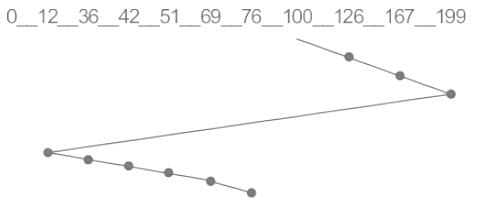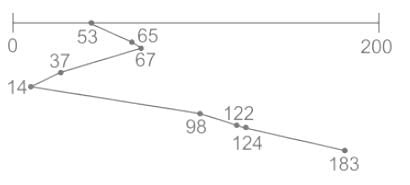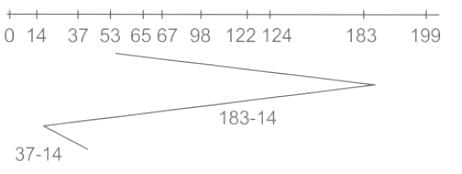Test: CPU Scheduling - Computer Science Engineering (CSE) MCQ
10 Questions MCQ Test - Test: CPU Scheduling
Let us suppose an operating system is using semaphores to handle process synchronisation. Let there be three process that end up being blocked and placed in suspended list. Which of the following algorithms is used for waking the process?
There are 200 tracks on a disk platter and the pending requests have come in the order - 36, 69, 167, 76, 42, 51, 126, 12, and 199, Assume the arm is located at the 100th track and moving towards track 200. If the sequence of disc access is 126, 167, 199, 12, 36, 42, 51, 69, and 76 then which disc access scheduling policy is used?
One disk queue with requests for I/O to blocks on cylinders. The Request are in the following manner:
98 183 37 122 14 124 65 67
Considering SSTF (shortest seek time first) scheduling, the total number of head movements is, if the disk head of initially at 53 is:
98 183 37 122 14 124 65 67
Considering SSTF (shortest seek time first) scheduling, the total number of head movements is, if the disk head of initially at 53 is:
The real-time operating system, which of the following is the most suitable scheduling scheme?
Consider a set of n tasks with known runtimes r1,r2,.....rn to be run on a uniprocessor machine. which of the following processor scheduling algorithms will result in the maximum throughput?
henever the CPU becomes idle, the operating system must select one of the processes in the ___ to be executed.
The ____ is the module that gives control of the CPU to the process selected by the short-term scheduler.
In Magnetic Disks Structures, The surface of a platter is logically divided into circular______
Consider the process track request are 98, 183, 37, 122, 14, 124, 14, 124, 65, 67 and the initial seek is 53. What is the total number of seeks for the C-Look algorithm?
The number of processes that are completed by a system per time unit, is called _______ .






















